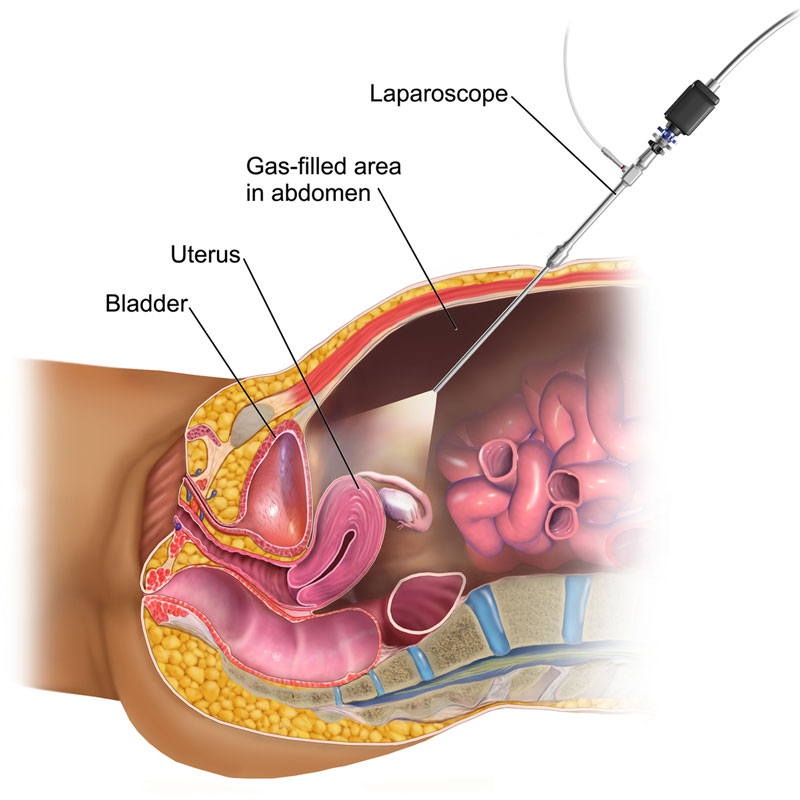Laparoscopic Surgery
What is Laparoscopic Surgery?
Laparoscopy is a one-of-a-kind type of surgery that has been transforming the medical field since the early 1900’s. At the beginning, it was used for operations related to the gallbladder but then expanded to include intestines, liver, and other organs.
This “minimally invasive” surgery uses smaller cuts than traditional surgery to produce outstanding results using a tube that contains a small video camera and surgical instruments inserted into the body through the small cuts in order to evaluate and assess the situation of organs inside the human body and conduct an operation.
How does Laparoscopic Surgery operate?
Our future and the future of our children will begin to look bright with the use of revolutionary tools such as the laparoscope. Before this system was implemented, surgeons were obliged to cut their patients 15 to 30 cm long during an operation. But with Laparoscopic Surgery, things are much different and better for the patient. On average, each cut is no more than 1.5cm long giving way to a tube, called a laparoscope which includes the tiny video camera and light, to be inserted into the cuts along with the surgical instruments required to perform the necessary surgery and consequently achieve exceptional results.
More Specializations
Laparoscopic surgery allows the surgeon to perform complex surgeries through small incisions. Recovery is very quick and with minimal pain as tiny incisions are being made. Very minimal scarring and quite esthetic.
Read more
Laser surgery for the prostate is a revolution that allows us to perform surgeries to the prostate while the patient is on blood thinners without the need to stop them, especially in patients who need to be continuously on such medications like Aspirin etc.
Read more
Laser surgery for kidney stones eradicates the need to perform painful incisions in order to remove kidney stones and gives the advantage of being very accurate and incision-free in most cases.
Read more
Sexual dysfunction in men.
Read more
Excess weight is associated with many comorbid conditions, such as heart disease, cholesterol imbalances, diabetes, and the Metabolic Syndrome.
Read more
Worldwide, diabetes is on the rise, majorly due to an unhealthy lifestyle as well as predisposing factors.
Read more
More Specializations
Laparoscopic surgery allows the surgeon to perform complex surgeries through small incisions. Recovery is very quick and with minimal pain as tiny incisions are being made. Very minimal scarring and quite esthetic.
Read more
Laser surgery for the prostate is a revolution that allows us to perform surgeries to the prostate while the patient is on blood thinners without the need to stop them, especially in patients who need to be continuously on such medications like Aspirin etc.
Read more
Laser surgery for kidney stones eradicates the need to perform painful incisions in order to remove kidney stones and gives the advantage of being very accurate and incision-free in most cases.
Read more
Sexual dysfunction in men.
Read more
Excess weight is associated with many comorbid conditions, such as heart disease, cholesterol imbalances, diabetes, and the Metabolic Syndrome.
Read more
Worldwide, diabetes is on the rise, majorly due to an unhealthy lifestyle as well as predisposing factors.
Read more

What kind of operations can be performed using Laparoscopic Surgery?
There is now hope for patients suffering from certain medical conditions that require intricate and delicate surgery. The answer lies with Laparoscopic Surgery. This method can be used in a wide range of surgeries. In the field of urology, almost any procedure can be carried out using this minimally invasive technique, performed by the adequate experts, including: laparoscopic nephrectomy and partial nephrectomy (removal of an entire kidney or part of the kidney), laparoscopic prolapse correction (for bladder, uterus, and rectal prolapse), laparoscopic prostatectomy (removal of the prostate), laparoscopic pudendal nerve release (for chronic pelvic pain), and much more.
What are the benefits of Laparoscopic Surgery for patients?
For featured laparoscopic surgery videos, please follow the link to our YouTube Channel.
